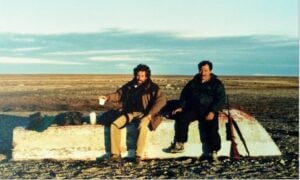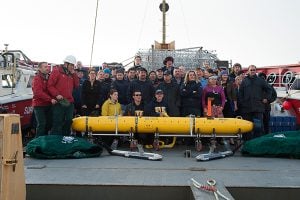An accordion. A wooden hairbrush with many of its bristles still intact. A stick of sealing wax bearing the thumbprint of the last person who used it. A pair of Royal Navy epaulettes, carefully stored in a box.
Preserved for over 170 years by the frigid waters of the Arctic Ocean, these and hundreds of other artifacts retrieved from the wreck of HMS Erebus and revealed to the public for the first time this week paint an intriguing picture of life aboard the doomed ship — and may ultimately hold clues to the fate of Sir John Franklin’s lost expedition.
In one of the largest and most complex underwater archaeological operations ever conducted in Canada, Parks Canada divers excavated some 350 artifacts from Erebus over the course of four weeks in the summer of 2019. Months of planning and logistical support from Inuit guardians in the small community of Gjoa Haven, Nunavut helped make this the “most successful season” of exploration since the wreck was discovered in 2014, says Marc-André Bernier, manager of Parks Canada’s underwater archaeology team and one of the divers who participated in the 2019 fieldwork.
“When you find a shipwreck, you have to understand what you’re faced with before you actually start doing some intrusive work on the site,” he explains. “Where should you start? What should be the methodology you embrace? What are the threats to divers in the water?”
Previous dives were conducted with scuba gear, meaning divers were limited by their portable air supply. For 2019, Parks Canada stationed a barge above the wreck to supply divers with air from the surface and pump hot water into their specially-designed suits, allowing them to stay under for more than an hour at a time.
“We were able to have divers go down on the wreck and record and map everything prior to removing objects, take photographs, and in some cases remove broken timbers and sediment that had covered certain areas,” says Bernier.







